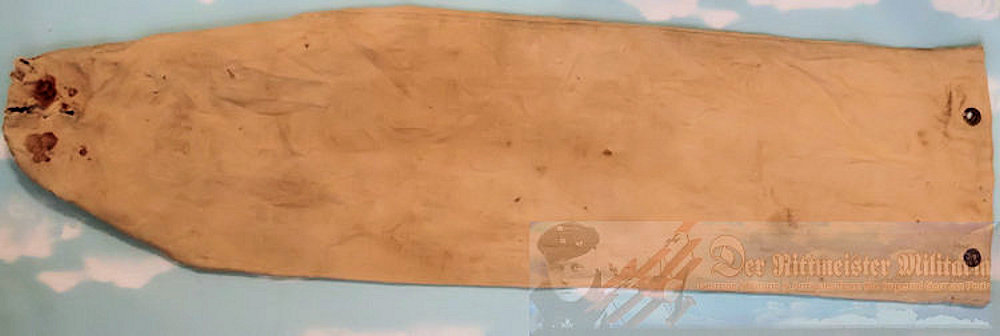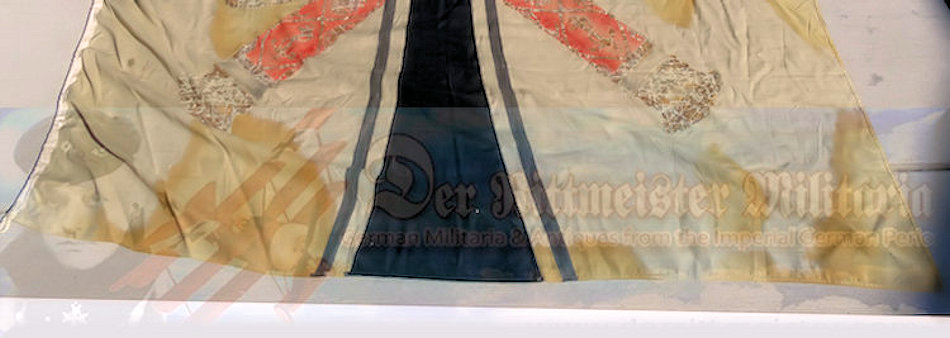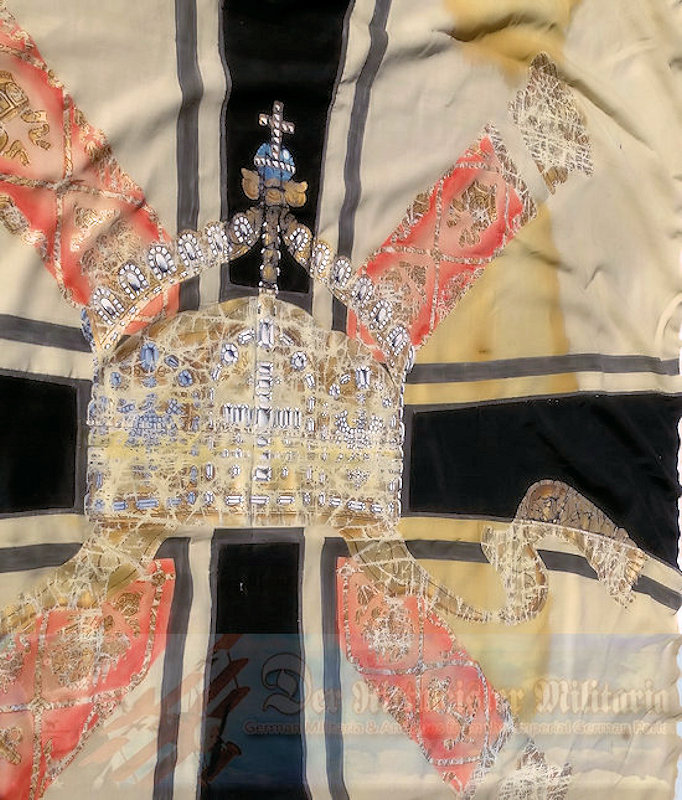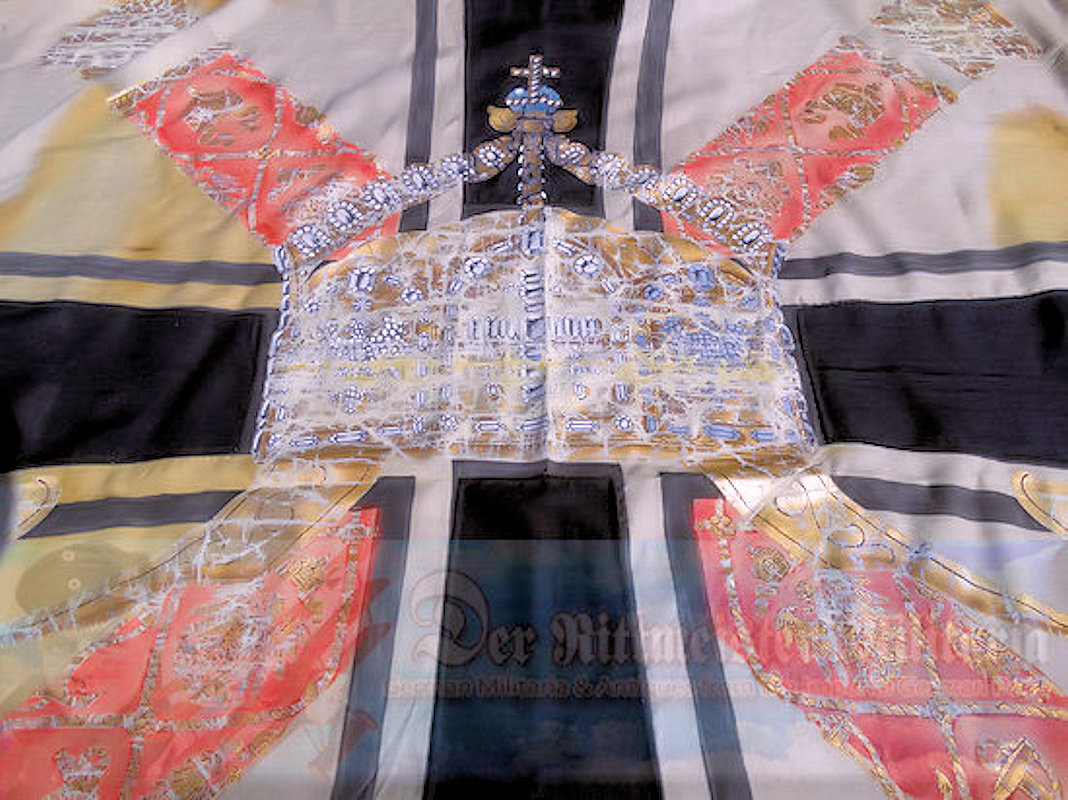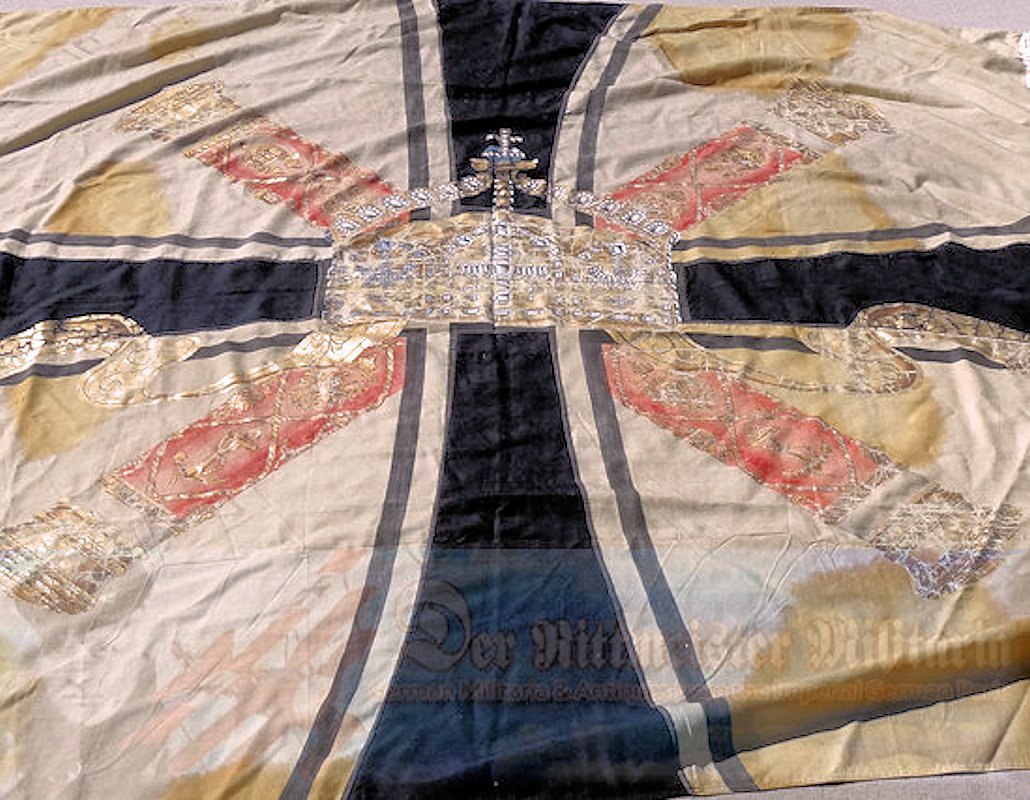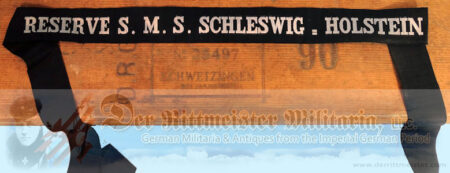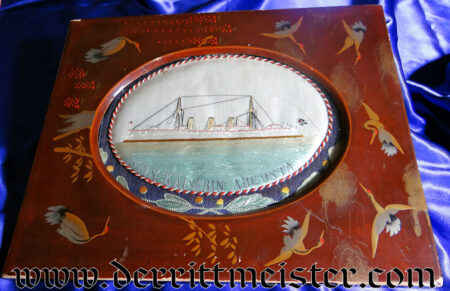Description
GROßADMIRAL’S SHIP’S FLAG WITH STORAGE BAG.
This is a consignment item. The Kaiserliche Marine (and its improvement) was a project close to the hearts of Kaiser Wilhelm II and the Imperial German Navy’s Secretary of State, Alfred von Tirpitz. As Queen Victoria of England’s eldest grandson (Wilhelm’s mother was Victoria’s eldest daughter), Wilhelm spent a good part of his childhood visiting England and hobnobbing with his many royal British relations. His regard for his grandmother’s naval forces eventually became a passion for Germany to equal and SURPASS his British cousin’s Royal Navy. Under Wilhelm II and von Tirpitz a massive build-up took place that saw the Kaiserliche Marine’s scope greatly advance. No matter how many ships Germany built, however, England continually raised the ante by producing more ships with much-improved designs. Germany had spent much of the 18th and 19th Centuries struggling to unite its many small states and kingdoms, and fending off incursions from the likes of Napoleon, which left it little time to pursue foreign colonial expansion. By the time Germany finally consolidated into an empire, only a few small areas were available for colonization. Also, Chancellor von Bismarck had disdained colonial expansion, and had seen little need for a larger navy, which was one of the many reasons that von Bismarck found himself retired shortly after Wilhelm II ascended the Imperial throne!
Once he came into power, Wilhelm II wasted no time in expanding his beloved navy. Until 1901, the Kaiserliche Marine’s highest rank had been that of an Admiral, which was equivalent to a General der Infanterie. [The German Navy’s only three “Flag Ranks” were Konteradmiral, Vizeadmiral, and Admiral]. This meant the Navy had no rank equivalent to the Army’s Generaloberst or Generalfeldmarschall. Wilhelm changed the situation in 1901 by establishing the rank of Großadmiral and, unsurprisingly, naming himself the rank’s first recipient. From that time until the German Empire’s demise, a total of six men achieved the rank, (listed below).
1901 – Kaiser Wilhelm II (1859–1941)
1901 – King Oskar II of Sweden (1829–1907)
28 June 1905 – Hans von Koester (1844–1928)
4 September 1909 – HRH Prinz Heinrich of Prussia (1862–1929)
27 January 1911 – Alfred von Tirpitz (1849–1930)*
*[Promoted on an Honorary Basis w/o Patent, and thus not authorized to wear a Großadmiral’s crossed batons.
Instead, his shoulder boards and/or epaulettes displayed four pips].
31 May 1918 – Henning von Holtzendorff (1853–1919)
Our offering today is an ultra rare Großadmiral’s flag. [PLEASE NOTE: in the Kaiserliche Marine, an Admiral of any rank was considered a “Flag” officer. Thus he was permitted to fly “his” flag from any ship that he was stationed aboard or visiting. This was especially true when a Großadmiral visited a ship]. The flag is amazingly beautiful to look at. My imagination immediately whisks me to when it flew from a battleship hosting one of the Großadmirale (a rather infrequent occasion). The massive flag measures 87″ x 89″ (220cm x 225cm) and is made with two different types and weights of cotton. The flag’s bulk consists of very gauzy, lightweight cotton, which was necessary for such a large flag. When held up to the light, it appears almost opaque. The areas featuring the German cross sport a far heavier cotton to protect the overall design and promote an inherent sense of strength.
The flag’s center features the pair of crossed batons emblematic of a Großadmiral’s office and rank. [To view similar crossed batons, you can look at those on Kaiser Wilhelm II’s single shoulder board (click here to see) or those on Großadmiral Hans von Koester epaulettes (click here to see) Both are currently for sale]. A Großadmiral’s batons, whether on his shoulder boards/epaulettes or on the actual baton he carried, were totally different from those for a Generalfeldmarschall (and far more beautiful, in my opinion). At any rate, the flag’s batons are very large and beautifully detailed. They give the flag some vivid pops of color, including metallic gold, blue, and red. The metallic paint was applied by hand. The flag’s artwork is amazing. The time and effort that went into creating this breathtaking flag had to have been considerable.
Many different sections of the flag do display stains. I do not know what caused them, but they appear across the flag. The flag shows MINIMAL mothing. NO markings whatsoever are present on the flag’s bunting. Two attachments for the lanyards necessary for when the flag was flown are present. Its storage bag is made from lightweight canvas and measures 11 ½” x 42.” The bag is dingy with age and has several holes and rust stains at its base. The base is held together by a metal clip in its center.
The flag is in surprisingly good condition, considering its age, size and the materials from which it was constructed. The consignor tells us that the auction house from which he purchased the flag stated that it had belonged to Großadmiral von Holtzendorff. No provenance other than this information is available, however. It remains an amazing historical artifact.

